Prashant Sharma
@prashantpsharma.bsky.social
Invertebrate biology. Phylogenomics. Whole genome duplications. Comparative development. Lab head.
Lab alum and Harvard postdoc Guilherme Gainett delivers the first gene edited horseshoe crabs!!
www.mbl.edu/news/whitman...
www.mbl.edu/news/whitman...
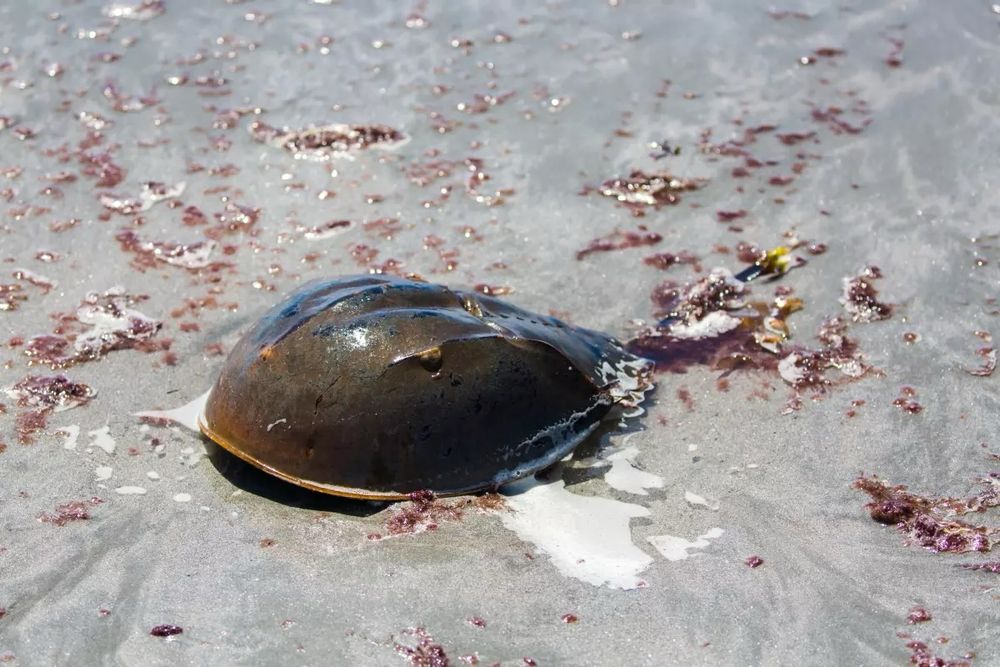
Whitman Fellow Designs Genomic Tools to Study Horseshoe Crab Eye Development | Marine Biological Laboratory
They may be famous for their striking blue blood, but horseshoe crabs have an award-winning vision system. In the 1930s, Haldan Keffer Hartline produced the first single-cell recording of a photorec...
www.mbl.edu
July 24, 2025 at 3:18 PM
Lab alum and Harvard postdoc Guilherme Gainett delivers the first gene edited horseshoe crabs!!
www.mbl.edu/news/whitman...
www.mbl.edu/news/whitman...
The lab is proud to have contributed to the first chromosome-level sea spider genome! Many thanks to Niko Papadopoulos, Georg Brenneis, and Andi Wanninger, who spearheaded the work! #pycnogonida
bmcbiol.biomedcentral.com/articles/10....
bmcbiol.biomedcentral.com/articles/10....
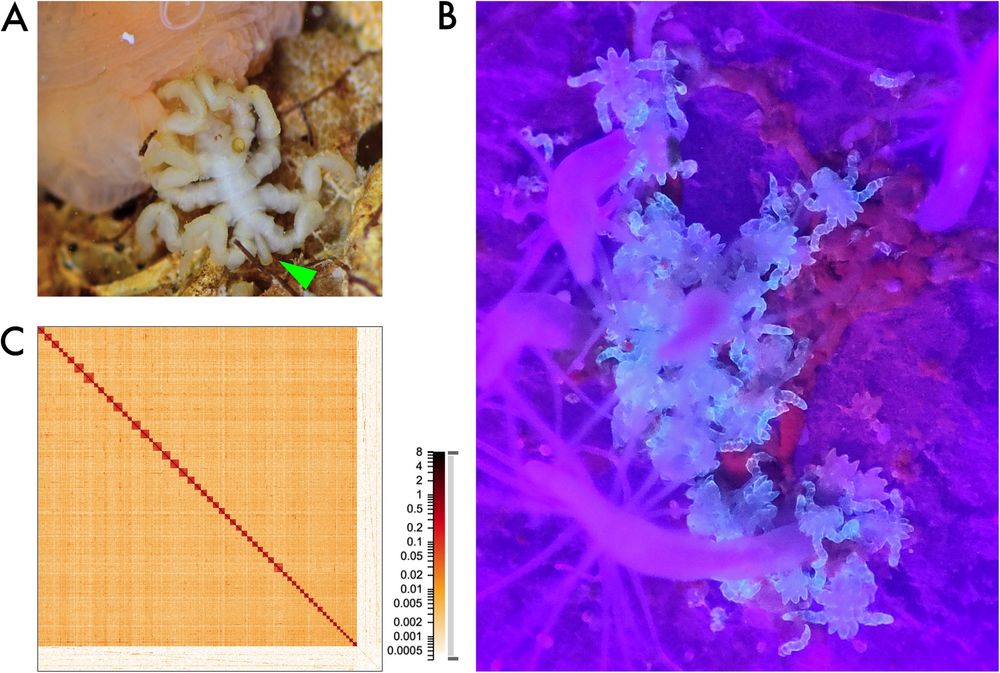
The genome of a sea spider corroborates a shared Hox cluster motif in arthropods with a reduced posterior tagma - BMC Biology
Background Chelicerate evolution is contentiously debated, with recent studies challenging traditional phylogenetic hypotheses and scenarios of major evolutionary events, like terrestrialization. Sea ...
bmcbiol.biomedcentral.com
July 1, 2025 at 11:49 PM
The lab is proud to have contributed to the first chromosome-level sea spider genome! Many thanks to Niko Papadopoulos, Georg Brenneis, and Andi Wanninger, who spearheaded the work! #pycnogonida
bmcbiol.biomedcentral.com/articles/10....
bmcbiol.biomedcentral.com/articles/10....
It’s an honor to have taught the arthropod module at Woods Hole Embryology! I started my daddy-long legs system at Woods Hole as a student when I took the course 16 years ago. What fun to be invited back to teach students to inject spiders and arachnid embryos! Added bonus: Gui Gainett and Limulus!

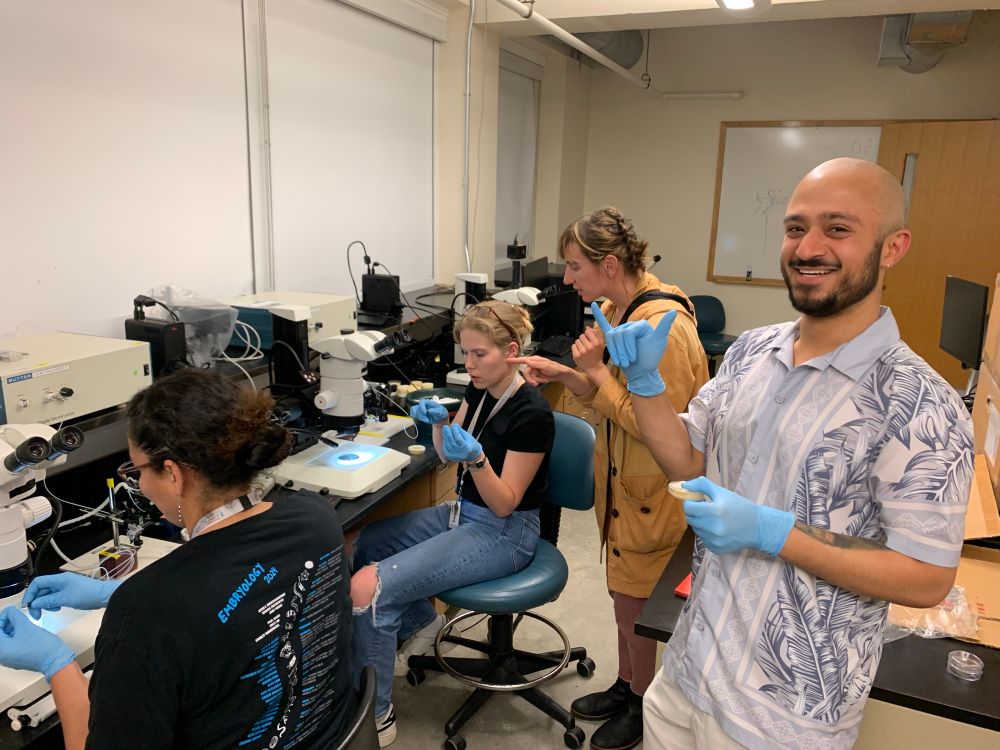
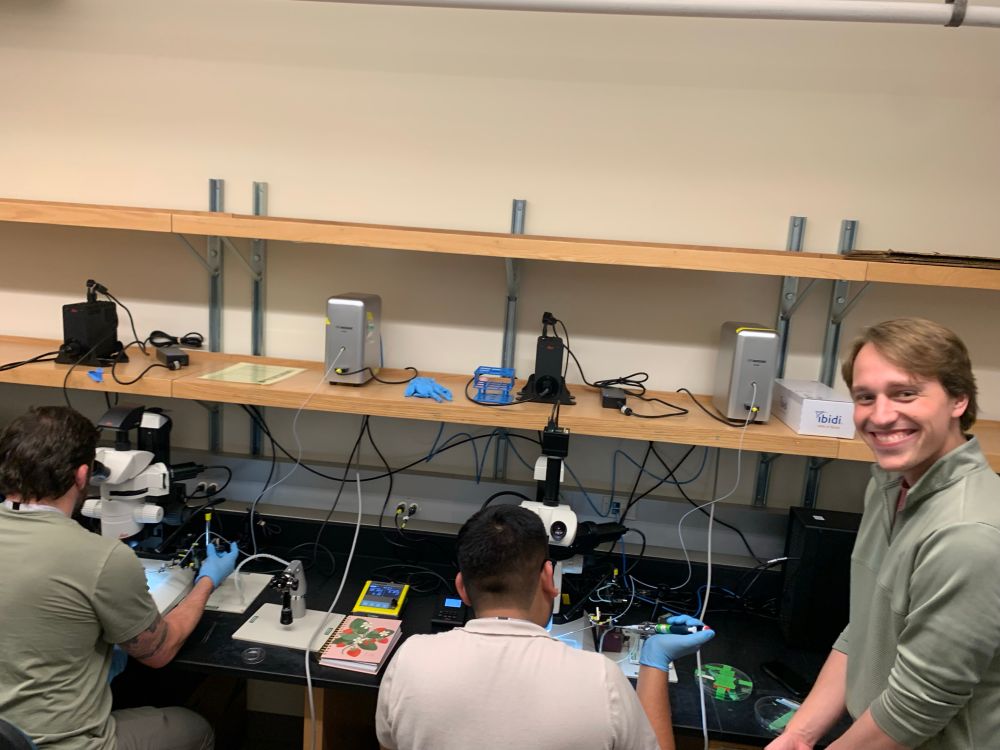
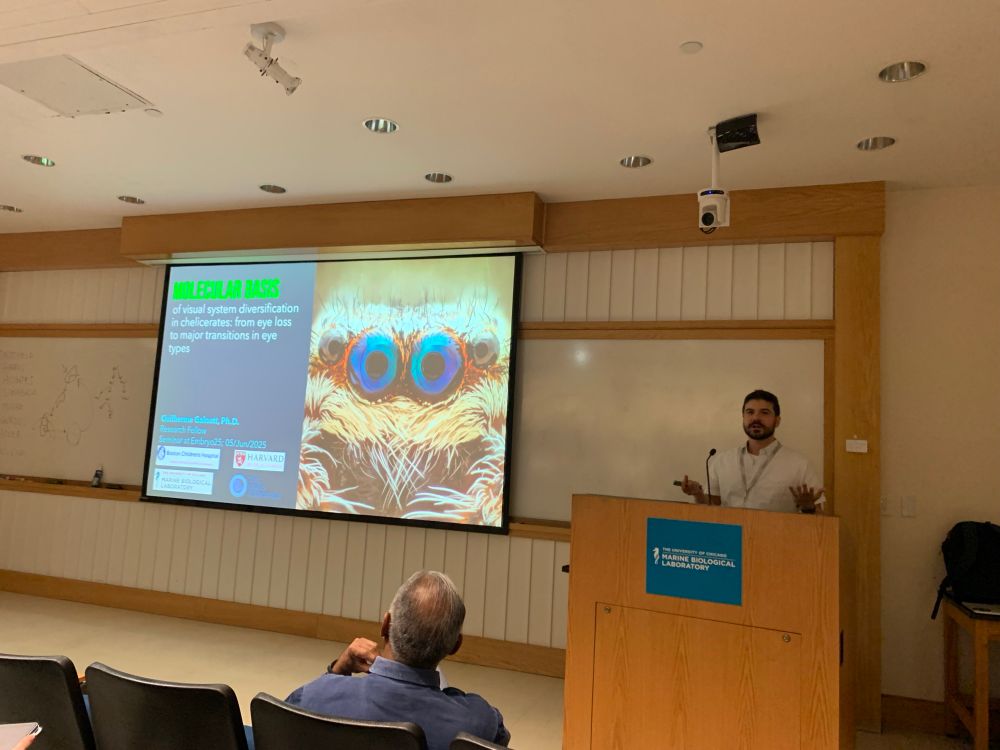
June 9, 2025 at 11:56 AM
It’s an honor to have taught the arthropod module at Woods Hole Embryology! I started my daddy-long legs system at Woods Hole as a student when I took the course 16 years ago. What fun to be invited back to teach students to inject spiders and arachnid embryos! Added bonus: Gui Gainett and Limulus!
www.sciencedirect.com/science/arti...
The lab is delighted to release the first comparative analysis of the arachnid orders Opiliones and Solifugae, using chromosome-level genomes! We look at macrosynteny as a phylogenetic character for resolving chelicerate phylogeny.
The lab is delighted to release the first comparative analysis of the arachnid orders Opiliones and Solifugae, using chromosome-level genomes! We look at macrosynteny as a phylogenetic character for resolving chelicerate phylogeny.
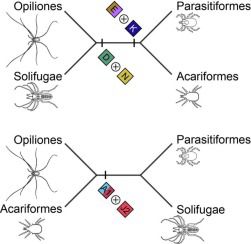
Exploring genome architecture as a source of phylogenetic characters for resolving the apulmonate arachnid polytomy
Chromosome-level genome assemblies are powerful tools for identifying the presence of rare genomic changes that can overcome phylogenetically intracta…
www.sciencedirect.com
May 26, 2025 at 1:34 PM
www.sciencedirect.com/science/arti...
The lab is delighted to release the first comparative analysis of the arachnid orders Opiliones and Solifugae, using chromosome-level genomes! We look at macrosynteny as a phylogenetic character for resolving chelicerate phylogeny.
The lab is delighted to release the first comparative analysis of the arachnid orders Opiliones and Solifugae, using chromosome-level genomes! We look at macrosynteny as a phylogenetic character for resolving chelicerate phylogeny.
A new review paper from the lab—fun times with sea spider and daddy-long legs embryos!
www.sciencedirect.com/science/arti...
www.sciencedirect.com/science/arti...

Evolution and homology of leg segments in Chelicerata: Evo-devo solutions to century-old challenges
A major theme in the evolution of Arthropoda is the origin and diversification of jointed appendages. One appealing framework for the evolution of art…
www.sciencedirect.com
April 30, 2025 at 5:44 PM
A new review paper from the lab—fun times with sea spider and daddy-long legs embryos!
www.sciencedirect.com/science/arti...
www.sciencedirect.com/science/arti...
Reposted by Prashant Sharma
Excited to share our recent review on extraembryonic mesoderm development, just published in Development!
"Extra embryonic mesoderm during development and in in vitro models."
journals.biologists.com/dev/article/...
"Extra embryonic mesoderm during development and in in vitro models."
journals.biologists.com/dev/article/...

March 15, 2025 at 2:17 PM
Excited to share our recent review on extraembryonic mesoderm development, just published in Development!
"Extra embryonic mesoderm during development and in in vitro models."
journals.biologists.com/dev/article/...
"Extra embryonic mesoderm during development and in in vitro models."
journals.biologists.com/dev/article/...
Reposted by Prashant Sharma
📢New paper in @royalsociety.org Proceedings B!📢
We tracked #eye #development in seven spider species with wildly different visual systems to try and identify the mechanisms underlying their diversity 👀👀👀👀
1/n
royalsocietypublishing.org/doi/10.1098/...
(Funded by @leverhulme.bsky.social)
We tracked #eye #development in seven spider species with wildly different visual systems to try and identify the mechanisms underlying their diversity 👀👀👀👀
1/n
royalsocietypublishing.org/doi/10.1098/...
(Funded by @leverhulme.bsky.social)
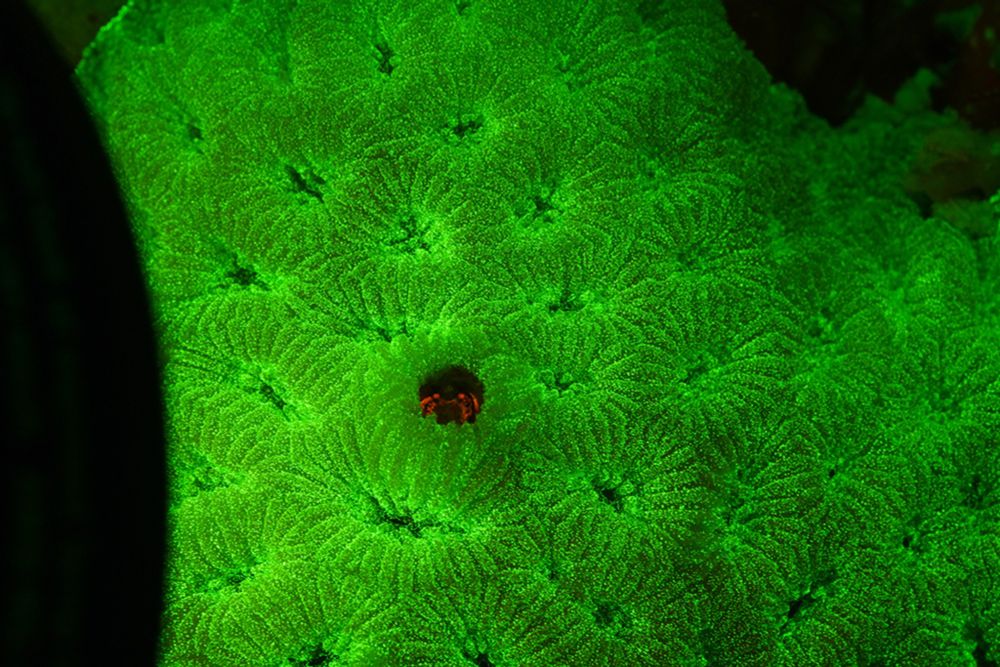
Development and patterning of a highly versatile visual system in spiders | Proceedings of the Royal Society B: Biological Sciences
Visual systems provide a key interface between organisms and their surroundings, and have evolved in many forms to perform diverse functions across the animal kingdom. Spiders exhibit a range of visual abilities and ecologies, the diversity of which is ...
royalsocietypublishing.org
March 14, 2025 at 11:25 AM
📢New paper in @royalsociety.org Proceedings B!📢
We tracked #eye #development in seven spider species with wildly different visual systems to try and identify the mechanisms underlying their diversity 👀👀👀👀
1/n
royalsocietypublishing.org/doi/10.1098/...
(Funded by @leverhulme.bsky.social)
We tracked #eye #development in seven spider species with wildly different visual systems to try and identify the mechanisms underlying their diversity 👀👀👀👀
1/n
royalsocietypublishing.org/doi/10.1098/...
(Funded by @leverhulme.bsky.social)
“Just because something's important, doesn't mean it's not very small.” —Frank the Pug, 1997
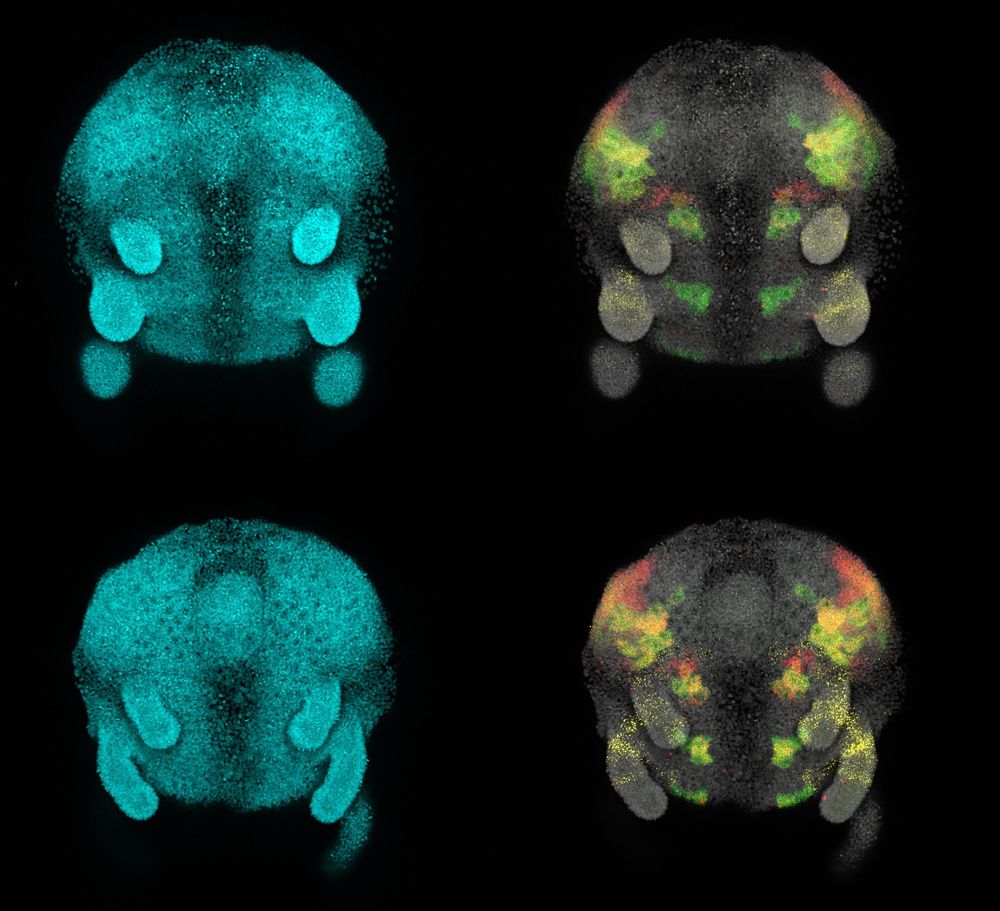
March 5, 2025 at 2:48 AM
“Just because something's important, doesn't mean it's not very small.” —Frank the Pug, 1997
Reposted by Prashant Sharma
Microtubules still doing their thing in an early ascidian embryo (Phallusia). Thanks to the Ascidian BioCell Team
February 13, 2025 at 8:18 AM
Microtubules still doing their thing in an early ascidian embryo (Phallusia). Thanks to the Ascidian BioCell Team
Friday is Phalangium day!
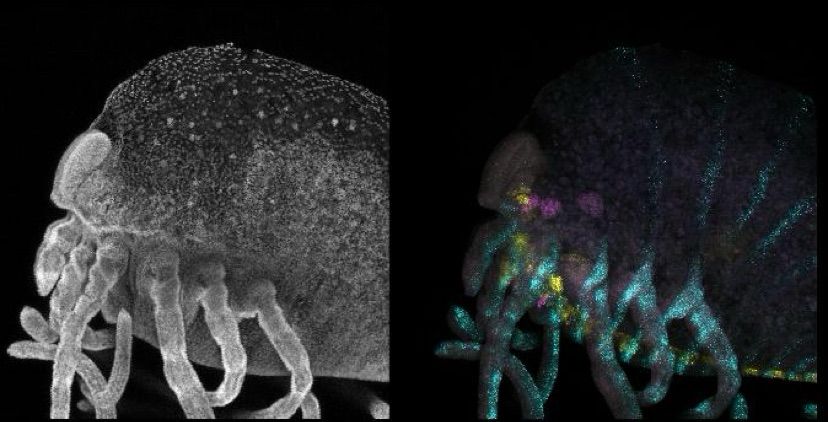
February 28, 2025 at 4:21 PM
Friday is Phalangium day!
Reposted by Prashant Sharma
marine embryo (ascidian/Phallusia) making a gut (gastrulation)...thanks to the Ascidian BioCell Team. Cell contours are blue, microtubules that separate the chromosomes are magenta
February 21, 2025 at 10:23 AM
marine embryo (ascidian/Phallusia) making a gut (gastrulation)...thanks to the Ascidian BioCell Team. Cell contours are blue, microtubules that separate the chromosomes are magenta
Interested in rare genomic changes and arachnid phylogeny? Check out our preprint here! We’re taking a look at the architecture of Solifugae and Opiliones genomes.
papers.ssrn.com/sol3/papers....
papers.ssrn.com/sol3/papers....
Exploring Genome Architecture as a Source of Phylogenetic Characters for Resolving the Apulmonate Arachnid Polytomy
Chromosome-level genome assemblies are powerful tools for identifying the presence of rare genomic changes that can overcome phylogenetically intractable proble
papers.ssrn.com
February 21, 2025 at 4:25 PM
Interested in rare genomic changes and arachnid phylogeny? Check out our preprint here! We’re taking a look at the architecture of Solifugae and Opiliones genomes.
papers.ssrn.com/sol3/papers....
papers.ssrn.com/sol3/papers....
The lab was delighted to host Professor Eileen Hebets, the John T. Emlen lecturer this year! For more on her fantastic work on spider songs and dances, please visit hebetslab.unl.edu.

February 21, 2025 at 3:56 PM
The lab was delighted to host Professor Eileen Hebets, the John T. Emlen lecturer this year! For more on her fantastic work on spider songs and dances, please visit hebetslab.unl.edu.
The lab is delighted to release the first genome for the giant American vinegaroon! The slowly-evolving order Uropygi captures the strongest signature yet of the arachnopulmonate whole genome duplication. #biodiversity #genomics
academic.oup.com/jhered/advan...
academic.oup.com/jhered/advan...
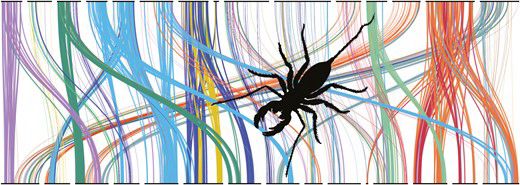
A chromosome-level genome of the giant vinegaroon Mastigoproctus giganteus exhibits the signature of pre-Silurian whole genome duplication
Abstract. Within the arachnids, chromosome-level genome assemblies have greatly accelerated the understanding of gene family evolution and developmental ge
academic.oup.com
February 7, 2025 at 5:46 PM
The lab is delighted to release the first genome for the giant American vinegaroon! The slowly-evolving order Uropygi captures the strongest signature yet of the arachnopulmonate whole genome duplication. #biodiversity #genomics
academic.oup.com/jhered/advan...
academic.oup.com/jhered/advan...
If you’re ever feeling down, Anoplodactylus has your back.
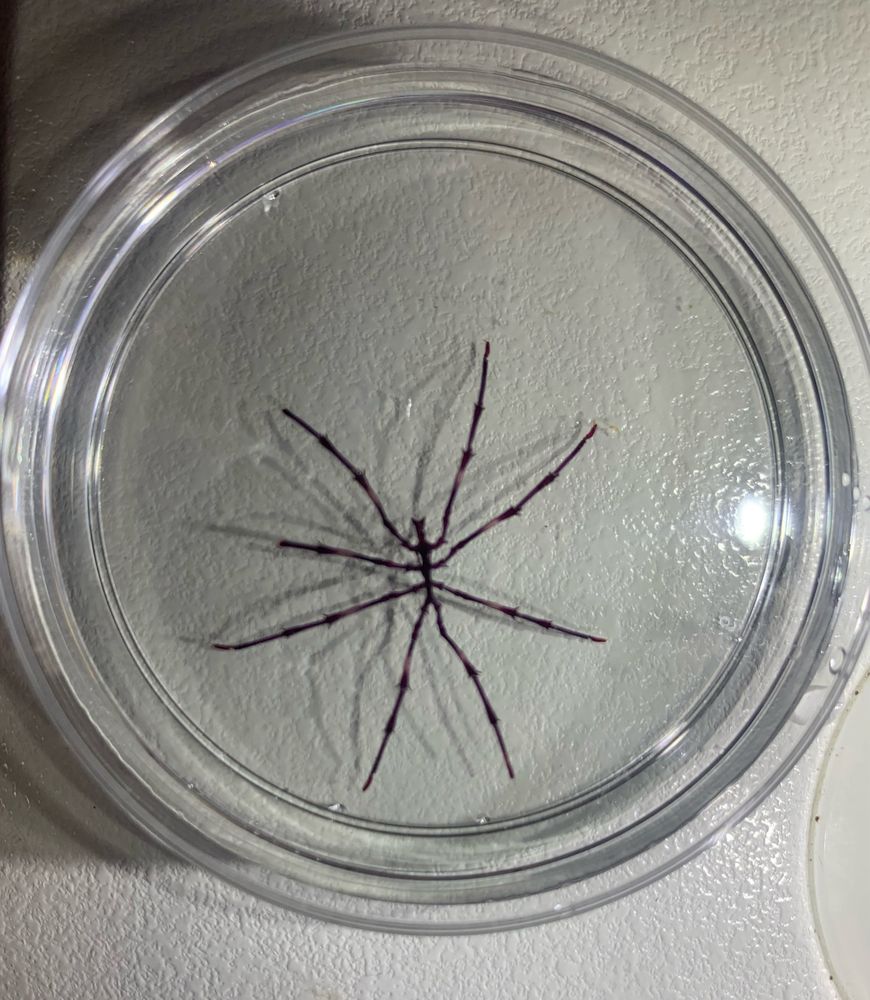
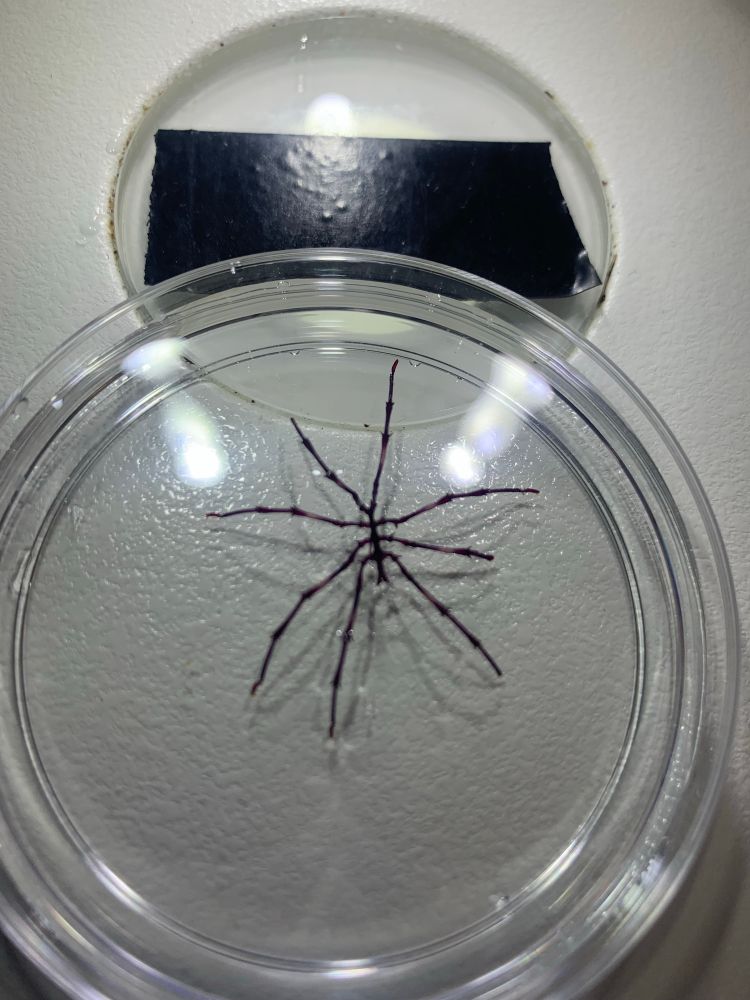
February 6, 2025 at 10:54 PM
If you’re ever feeling down, Anoplodactylus has your back.
Very excited about the publication of this review with my dear friend and colleague, Efrat Gavish-Regev!
www.annualreviews.org/content/jour...
www.annualreviews.org/content/jour...
The Evolutionary Biology of Chelicerata | Annual Reviews
Chelicerata constitutes an ancient, biodiverse, and ecologically significant group of Arthropoda. The study of chelicerate evolution has undergone a renaissance in the past decade, resulting in major ...
www.annualreviews.org
January 29, 2025 at 8:37 PM
Very excited about the publication of this review with my dear friend and colleague, Efrat Gavish-Regev!
www.annualreviews.org/content/jour...
www.annualreviews.org/content/jour...
A scorpion embryo to brighten your day.
Purple: Pax2A. Yellow: Pax2B. Blue: nuclei.
Purple: Pax2A. Yellow: Pax2B. Blue: nuclei.

January 29, 2025 at 3:28 AM
A scorpion embryo to brighten your day.
Purple: Pax2A. Yellow: Pax2B. Blue: nuclei.
Purple: Pax2A. Yellow: Pax2B. Blue: nuclei.
I’m mesmerized by Japanese sea nettles.
January 24, 2025 at 3:06 AM
I’m mesmerized by Japanese sea nettles.
Reposted by Prashant Sharma
doi.org/10.1073/pnas...
Olfaction in spiders. We found that the wall pore sensilla in spiders look similar from the outside to those of insects, but differ ultrastructurally in various ways. Independent evolution!
🧪
Olfaction in spiders. We found that the wall pore sensilla in spiders look similar from the outside to those of insects, but differ ultrastructurally in various ways. Independent evolution!
🧪

Olfaction with legs—Spiders use wall-pore sensilla for pheromone detection | PNAS
The sense of smell is a central sensory modality of most terrestrial species. However,
our knowledge of olfaction is based on vertebrates and insec...
doi.org
January 6, 2025 at 10:34 PM
doi.org/10.1073/pnas...
Olfaction in spiders. We found that the wall pore sensilla in spiders look similar from the outside to those of insects, but differ ultrastructurally in various ways. Independent evolution!
🧪
Olfaction in spiders. We found that the wall pore sensilla in spiders look similar from the outside to those of insects, but differ ultrastructurally in various ways. Independent evolution!
🧪
Reposted by Prashant Sharma
Let's take a look #UnderTheScope! 👀 🔬 This is an adult Nematostella where stinging cells are labeled with eGFP (green). The Gibson Lab studies these to understand #evolution. (@gelatinoussting.bsky.social) #EvoDevo #CellBiology
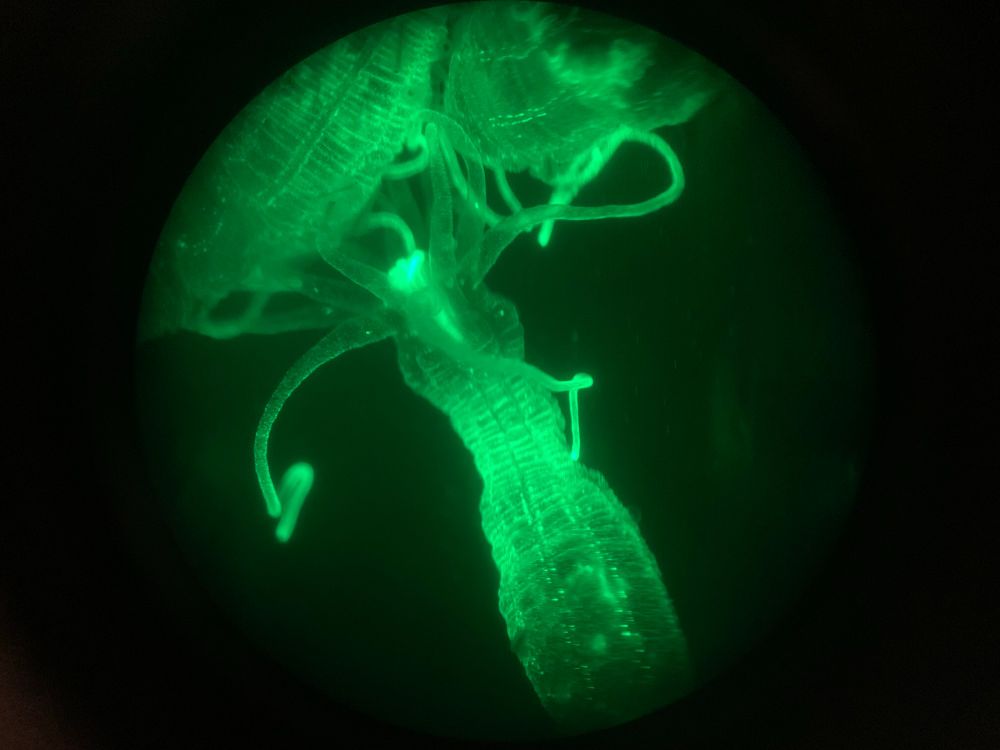
January 23, 2025 at 5:54 PM
Let's take a look #UnderTheScope! 👀 🔬 This is an adult Nematostella where stinging cells are labeled with eGFP (green). The Gibson Lab studies these to understand #evolution. (@gelatinoussting.bsky.social) #EvoDevo #CellBiology


